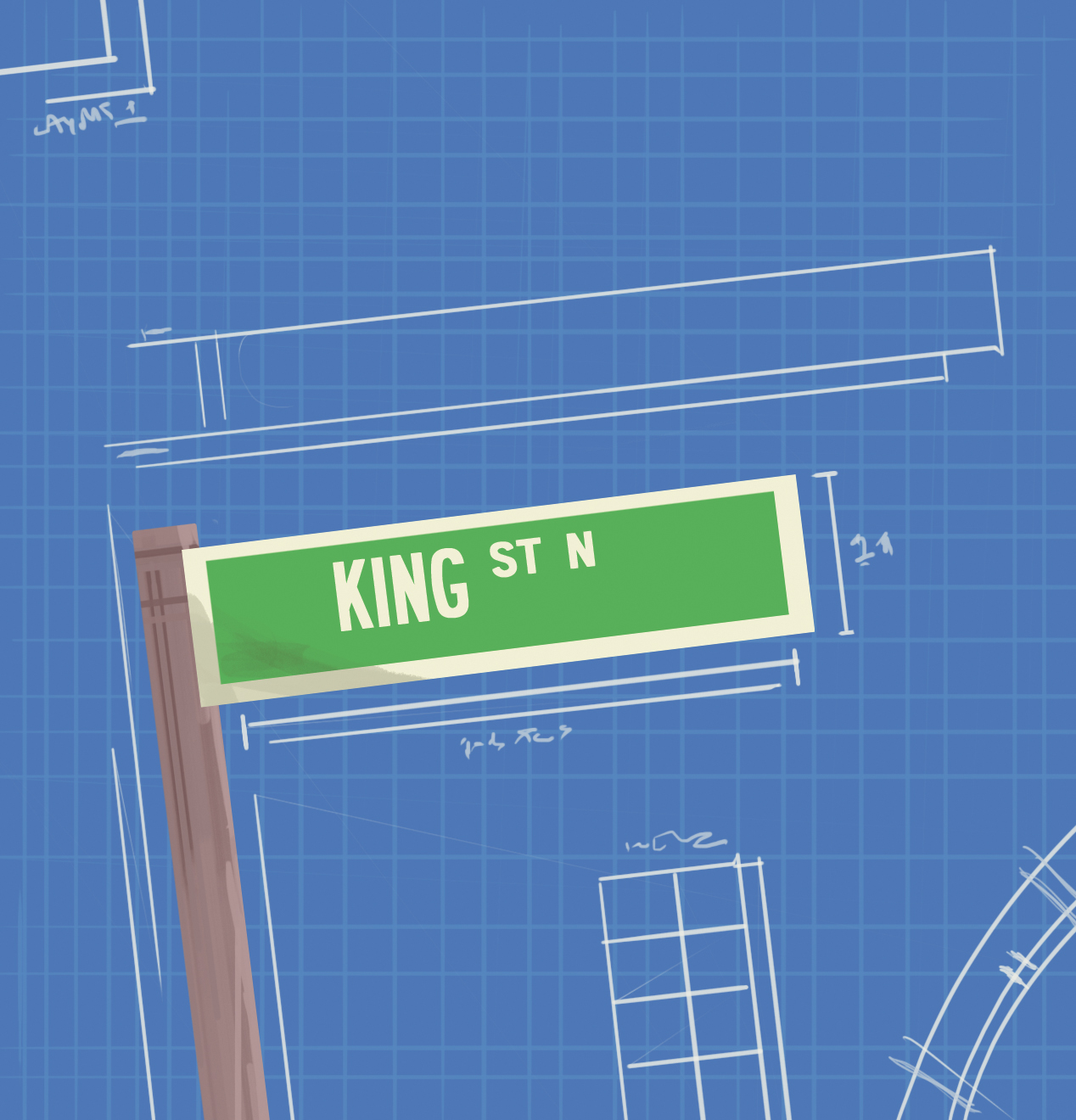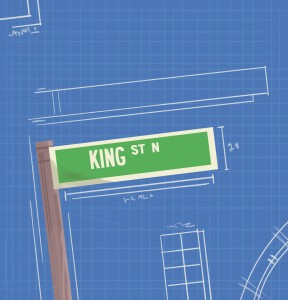King Street redesign underway

Implementation of joint project in final stages and will aid cyclists, pedestrians and students

The City of Waterloo is well on its way to implementing a major redesign of King Street to incorporate safe cycling, landscape and pedestrian interaction with local businesses.
The process of design and gaining approval began in 2010 and is officially in its final stages of approval this month.
The new layout will include improved lighting, wider side walks and will decrease traffic lanes from four to two lanes.
The redesign came from a multitude of smaller projects only looking to fix infrastructure, but after several assessments and forecasts, it was determined an overall change was needed leading to the creation of a bigger plan set in motion.
Eric Saunderson, project manager for the Region of Waterloo, highlighted a number of reasons as to how each improvement will lead to an overall higher quality of living and travelling experience in Waterloo.
One of these reasons is the extensive pedestrian movement as students continue to visit Uptown Waterloo. The redesign plans to enhance those facilities by widening sidewalks and to install bike lanes to encourage and promote cycling. In addition, Saunderson said the redesign plans will complement ongoing private developments of high rise buildings in the area.
“We want to create an environment that is going to really cater to the type of people that are going to be living in these units,” he said.
As for the project’s impact on parking and traffic, there will be parking spaces on the west side of King St. that are planned for removal or relocation elsewhere in the Uptown area. This is to accommodate off-road segregated cycling, which can be unsafe with the presence of parked vehicles. Saunderson said in a broader context, the number of spaces that will be removed is 0.5 per cent in comparison to the number of parking spaces available.
“Cycling on-road in this environment with parked vehicles is uncomfortable and can be unsafe. We’re certainly looking for ways to improve that for everyone, recognizing that we’re trying to promote cycling ridership as well as pedestrians … these are the people who are going to be shopping at these businesses,” he said.
He also adds that King St. is currently operating under capacity, as the volume of traffic is under what is required for a four-lane roadway. Looking at a forecast of traffic volume in the future, Saunderson said that the volume of traffic, which exists today, will be the same 20 years from now. This volume of traffic can be accommodated on a two-lane roadway with left turn lanes in Uptown Waterloo, as only 33 per cent of commuters plan to go to Uptown Waterloo as a designation while the rest are simply passing through.
“It is not designed to be a higher speed roadway, it is designed for a much slower speed,” he said.
The Region of Waterloo has also considered the opinions of the community and including them in the process by holding several public consultation centres and workshops. Representatives from the university have also been involved to engage students.
Gary Nower, assistant vice-president of physical resources at Wilfrid Laurier University, said that it is a great opportunity for the institution to work with the region on this project. Laurier plans to incorporate design standards for landscape, lighting and furniture to include as part of the Laurier campus. According to Nower, the same project was implemented on St. George street through the University of Toronto.
“We think it will set the boundary for the university district. So you will really get a sense that you are entering a campus as you come along the street, that’s our hope,” said Nower.

